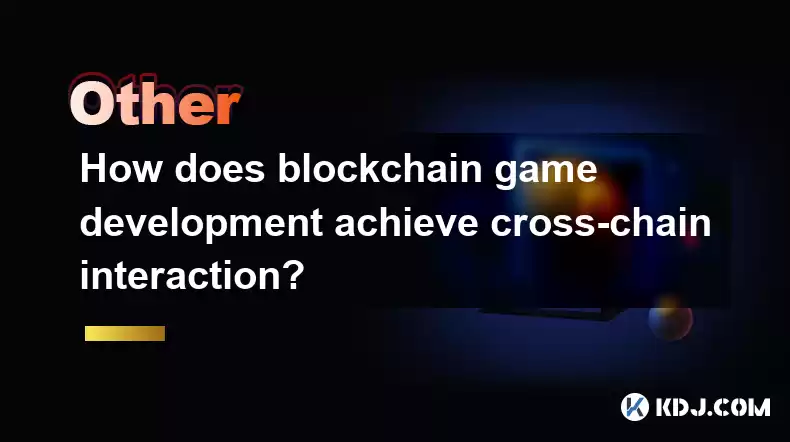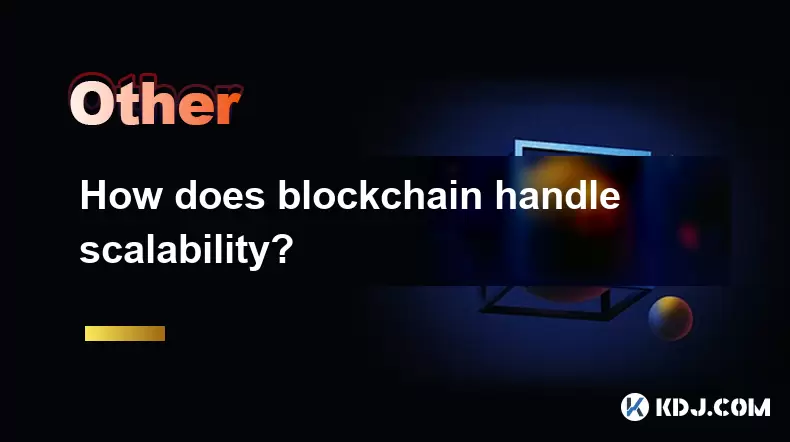-
 Bitcoin
Bitcoin $112400
-1.07% -
 Ethereum
Ethereum $3409
-3.27% -
 XRP
XRP $2.784
-6.60% -
 Tether USDt
Tether USDt $0.9997
-0.03% -
 BNB
BNB $739.3
-2.09% -
 Solana
Solana $158.0
-2.90% -
 USDC
USDC $0.9998
-0.02% -
 TRON
TRON $0.3213
-0.94% -
 Dogecoin
Dogecoin $0.1929
-5.01% -
 Cardano
Cardano $0.6974
-2.82% -
 Hyperliquid
Hyperliquid $36.69
-2.31% -
 Sui
Sui $3.327
-4.80% -
 Stellar
Stellar $0.3672
-5.18% -
 Chainlink
Chainlink $15.65
-3.07% -
 Bitcoin Cash
Bitcoin Cash $525.0
-1.68% -
 Hedera
Hedera $0.2291
-6.00% -
 Avalanche
Avalanche $20.91
-2.96% -
 Ethena USDe
Ethena USDe $1.000
0.00% -
 Toncoin
Toncoin $3.520
-1.12% -
 UNUS SED LEO
UNUS SED LEO $8.968
0.14% -
 Litecoin
Litecoin $105.7
0.26% -
 Shiba Inu
Shiba Inu $0.00001181
-1.79% -
 Polkadot
Polkadot $3.492
-2.08% -
 Uniswap
Uniswap $8.800
-3.10% -
 Dai
Dai $0.9999
-0.01% -
 Monero
Monero $289.9
-3.17% -
 Bitget Token
Bitget Token $4.243
-1.27% -
 Pepe
Pepe $0.00001006
-3.67% -
 Cronos
Cronos $0.1248
-5.68% -
 Aave
Aave $249.7
-2.50%
How does blockchain game development achieve cross-chain interaction?
Cross-chain interaction in blockchain games allows seamless asset transfers and data synchronization across different blockchains, enhancing gameplay and user engagement.
Apr 16, 2025 at 11:29 am

Introduction to Cross-Chain Interaction in Blockchain Game Development
Blockchain game development has revolutionized the gaming industry by introducing decentralized systems, digital asset ownership, and new monetization models. One of the most intriguing aspects of this field is cross-chain interaction, which allows different blockchain networks to communicate and transact with each other. This capability is crucial for creating a seamless gaming experience that spans multiple blockchains, enhancing interoperability and user engagement. In this article, we will explore how blockchain game developers achieve cross-chain interaction, delving into the technologies and methods used to bridge different blockchain ecosystems.
Understanding Blockchain and Cross-Chain Technology
Before diving into the specifics of cross-chain interaction in game development, it's essential to understand the basics of blockchain technology. A blockchain is a decentralized ledger that records transactions across numerous computers, ensuring transparency and security. Each blockchain operates independently with its own set of rules, consensus mechanisms, and native tokens.
Cross-chain technology enables the transfer of assets and data between different blockchains. This is vital for blockchain games that aim to leverage the strengths of various networks, such as Ethereum's smart contract functionality and Binance Smart Chain's lower transaction fees. Cross-chain interaction can be achieved through various methods, including atomic swaps, sidechains, and cross-chain bridges.
Atomic Swaps for Seamless Asset Transfers
Atomic swaps are a fundamental method for enabling cross-chain interaction in blockchain games. They allow users to exchange assets directly between two different blockchains without the need for intermediaries. This method is particularly useful for games that involve trading digital assets across platforms.
- Initiate the Swap: The process begins with a user initiating a swap request on one blockchain, specifying the assets they wish to exchange and the desired counterparty on another blockchain.
- Lock Assets: Both parties lock their respective assets in a smart contract on their native blockchains. These smart contracts ensure that the assets are only released if the swap conditions are met.
- Verify and Exchange: Once the assets are locked, the smart contracts on both blockchains verify the transaction. If everything is in order, the assets are simultaneously released to the respective parties, completing the swap.
Atomic swaps provide a secure and trustless way to transfer assets between blockchains, making them an attractive solution for blockchain game developers looking to enable cross-chain interaction.
Sidechains: Enhancing Scalability and Interoperability
Sidechains are another approach to achieving cross-chain interaction in blockchain games. A sidechain is a separate blockchain that is linked to the main blockchain, allowing assets to be transferred between them. This method can enhance scalability and interoperability, making it easier for games to operate across multiple networks.
- Create a Sidechain: Developers create a sidechain that is specifically designed to support the game's needs, such as faster transaction processing or lower fees.
- Peg Assets: Assets from the main blockchain are pegged to the sidechain, meaning they are locked on the main chain and represented on the sidechain as equivalent tokens.
- Transfer and Use: Players can transfer their assets to the sidechain and use them within the game. When they want to move their assets back to the main chain, the process is reversed, and the assets are unlocked.
Sidechains offer a flexible solution for blockchain games, allowing developers to tailor the sidechain's properties to meet the game's specific requirements while maintaining a connection to the main blockchain.
Cross-Chain Bridges: Facilitating Asset and Data Transfer
Cross-chain bridges are specialized protocols that enable the transfer of assets and data between different blockchains. These bridges are essential for blockchain games that need to interact with multiple networks seamlessly.
- Select a Bridge: Developers choose a cross-chain bridge that supports the blockchains involved in the game. Popular bridges include Cosmos' Inter-Blockchain Communication (IBC) protocol and Polkadot's parachains.
- Set Up the Bridge: The bridge is set up to connect the game's primary blockchain with other networks. This involves deploying smart contracts on each blockchain to facilitate communication.
- Transfer Assets: Players can use the bridge to transfer their assets between blockchains. For example, a player might move tokens from Ethereum to Binance Smart Chain to take advantage of lower fees.
- Sync Data: In addition to asset transfers, cross-chain bridges can synchronize data across blockchains, ensuring that game states and player progress are consistent across different networks.
Cross-chain bridges provide a robust solution for achieving cross-chain interaction, enabling blockchain games to leverage the strengths of multiple ecosystems.
Implementing Cross-Chain Interaction in Game Development
To implement cross-chain interaction in blockchain game development, developers must carefully plan and execute several steps. This involves selecting the appropriate technologies, integrating them into the game's architecture, and ensuring that the user experience remains seamless.
- Choose the Right Technologies: Developers need to evaluate the available cross-chain technologies and choose the ones that best fit the game's requirements. This might involve using atomic swaps for simple asset transfers, sidechains for enhanced scalability, or cross-chain bridges for comprehensive interoperability.
- Integrate with Game Mechanics: The chosen cross-chain solutions must be integrated into the game's mechanics and user interface. This involves developing smart contracts and APIs that facilitate cross-chain interactions and ensuring that players can easily transfer assets and data between blockchains.
- Test and Optimize: Thorough testing is crucial to ensure that cross-chain interactions work smoothly and securely. Developers should simulate various scenarios to identify and fix any issues, optimizing the system for performance and user experience.
- Educate Players: Finally, developers need to educate players about the benefits and mechanics of cross-chain interaction. This can be done through in-game tutorials, documentation, and community engagement, helping players understand how to leverage the game's cross-chain capabilities.
FAQs
Q1: What are the main challenges of implementing cross-chain interaction in blockchain games?
A1: The main challenges include technical complexity, security risks, and user adoption. Ensuring that cross-chain transactions are secure and seamless requires advanced technical expertise. Additionally, players may need time to understand and trust cross-chain interactions, which can impact adoption rates.
Q2: Can cross-chain interaction improve the gaming experience for players?
A2: Yes, cross-chain interaction can enhance the gaming experience by providing players with more flexibility and options. Players can access different blockchain networks to take advantage of lower fees, faster transactions, or unique game features, enriching their overall experience.
Q3: Are there any successful examples of blockchain games using cross-chain interaction?
A3: Yes, several blockchain games have successfully implemented cross-chain interaction. For example, Axie Infinity uses sidechains to improve scalability, while games on the Polygon network leverage cross-chain bridges to interact with Ethereum, offering players a seamless experience across multiple ecosystems.
Q4: How do cross-chain interactions affect the security of blockchain games?
A4: Cross-chain interactions can introduce new security risks, such as vulnerabilities in the bridge or sidechain protocols. However, when implemented correctly with robust security measures, cross-chain interactions can also enhance security by distributing risk across multiple networks and enabling more secure asset transfers.
Disclaimer:info@kdj.com
The information provided is not trading advice. kdj.com does not assume any responsibility for any investments made based on the information provided in this article. Cryptocurrencies are highly volatile and it is highly recommended that you invest with caution after thorough research!
If you believe that the content used on this website infringes your copyright, please contact us immediately (info@kdj.com) and we will delete it promptly.
- Crypto, Phishing, and Your Wallet: A New Yorker's Guide to Staying Safe
- 2025-08-03 10:30:16
- Troller Cat Meme Coin Presale Soars: A New King in the Crypto Jungle?
- 2025-08-03 10:30:16
- Grayscale, Altcoin Trust, and Mid-Cap Mania: What's the Deal?
- 2025-08-03 08:50:16
- XRP, ADA, and the Altcoin Evolution: What's Hot and What's Next
- 2025-08-03 08:30:16
- Altcoins, Bitcoin, and Inflows: Decoding the Crypto Current
- 2025-08-03 09:30:16
- HBAR Price Check: Will Monthly Gains Hold at This Resistance Level?
- 2025-08-03 08:30:16
Related knowledge

What is the difference between on-chain and off-chain transactions?
Aug 02,2025 at 04:22pm
Understanding On-Chain TransactionsOn-chain transactions refer to digital asset transfers that are recorded directly on a blockchain ledger. These tra...

What is the double-spending problem and how does blockchain prevent it?
Aug 02,2025 at 01:07pm
Understanding the Double-Spending ProblemThe double-spending problem is a fundamental challenge in digital currency systems where the same digital tok...

What is the difference between a blockchain and a database?
Aug 01,2025 at 09:36pm
Understanding the Core Structure of a BlockchainA blockchain is a decentralized digital ledger that records data in a series of immutable blocks linke...

How does blockchain handle scalability?
Aug 02,2025 at 02:58pm
Understanding Blockchain Scalability ChallengesBlockchain scalability refers to a network's ability to handle an increasing volume of transactions wit...

What are the different types of blockchains?
Aug 03,2025 at 03:01am
Public Blockchains: Open and Decentralized NetworksPublic blockchains are the most widely recognized type of blockchain, characterized by their open a...

What is a hash in a blockchain?
Aug 02,2025 at 05:28am
Understanding the Concept of Hash in BlockchainA hash in the context of blockchain technology refers to a unique digital fingerprint generated by a cr...

What is the difference between on-chain and off-chain transactions?
Aug 02,2025 at 04:22pm
Understanding On-Chain TransactionsOn-chain transactions refer to digital asset transfers that are recorded directly on a blockchain ledger. These tra...

What is the double-spending problem and how does blockchain prevent it?
Aug 02,2025 at 01:07pm
Understanding the Double-Spending ProblemThe double-spending problem is a fundamental challenge in digital currency systems where the same digital tok...

What is the difference between a blockchain and a database?
Aug 01,2025 at 09:36pm
Understanding the Core Structure of a BlockchainA blockchain is a decentralized digital ledger that records data in a series of immutable blocks linke...

How does blockchain handle scalability?
Aug 02,2025 at 02:58pm
Understanding Blockchain Scalability ChallengesBlockchain scalability refers to a network's ability to handle an increasing volume of transactions wit...

What are the different types of blockchains?
Aug 03,2025 at 03:01am
Public Blockchains: Open and Decentralized NetworksPublic blockchains are the most widely recognized type of blockchain, characterized by their open a...

What is a hash in a blockchain?
Aug 02,2025 at 05:28am
Understanding the Concept of Hash in BlockchainA hash in the context of blockchain technology refers to a unique digital fingerprint generated by a cr...
See all articles

























































































